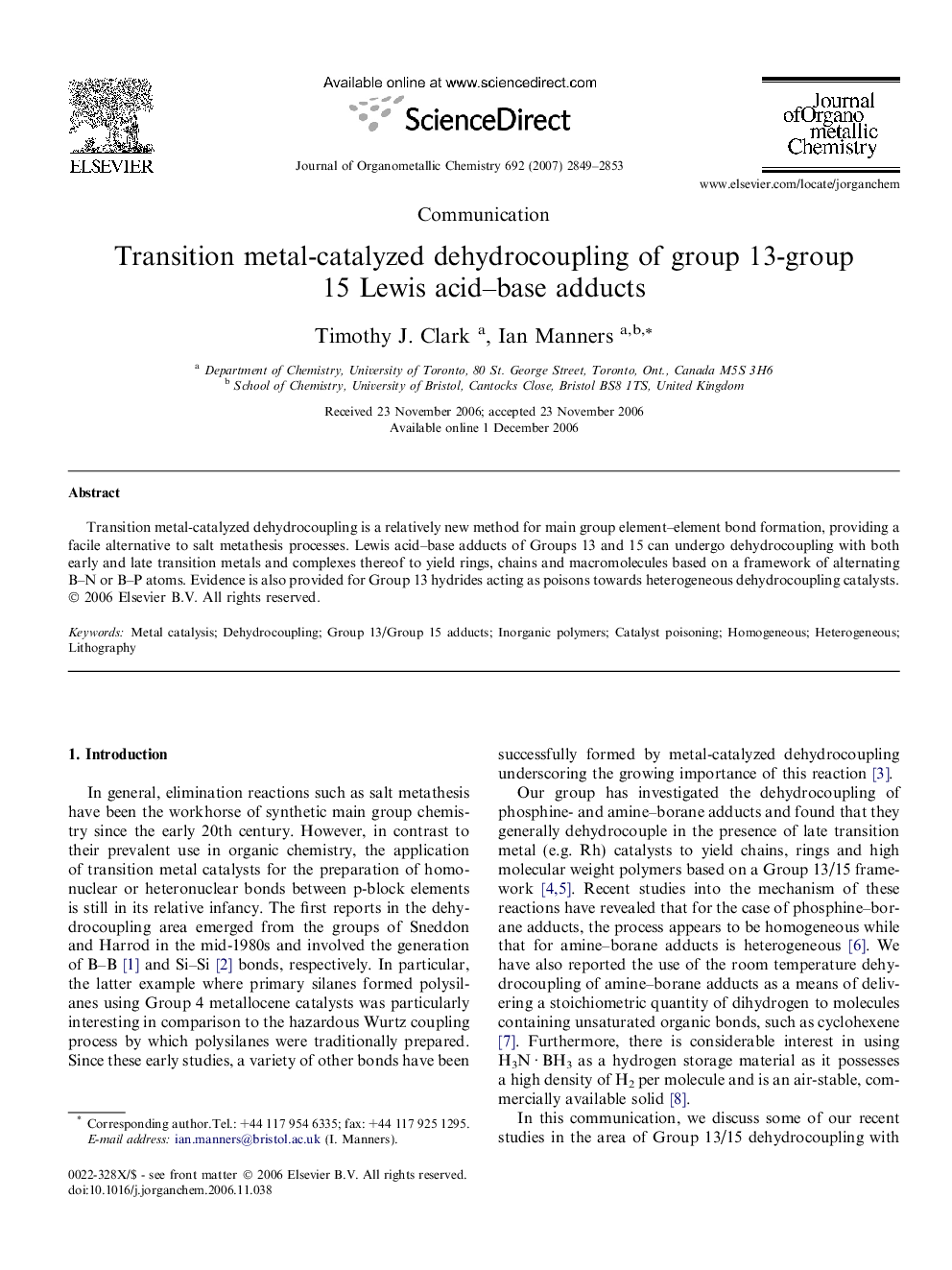| Article ID | Journal | Published Year | Pages | File Type |
|---|---|---|---|---|
| 1325192 | Journal of Organometallic Chemistry | 2007 | 5 Pages |
Transition metal-catalyzed dehydrocoupling is a relatively new method for main group element–element bond formation, providing a facile alternative to salt metathesis processes. Lewis acid–base adducts of Groups 13 and 15 can undergo dehydrocoupling with both early and late transition metals and complexes thereof to yield rings, chains and macromolecules based on a framework of alternating B–N or B–P atoms. Evidence is also provided for Group 13 hydrides acting as poisons towards heterogeneous dehydrocoupling catalysts.
Graphical abstractLewis acid–base adducts of Groups 13 and 15 can undergo dehydrocoupling with both early and late transition metals and complexes thereof to yield rings, chains and macromolecules based on a framework of alternating B–N or B–P atoms. Evidence is also provided for Group 13 hydrides acting as poisons towards heterogeneous dehydrocoupling catalysts.Figure optionsDownload full-size imageDownload as PowerPoint slide
